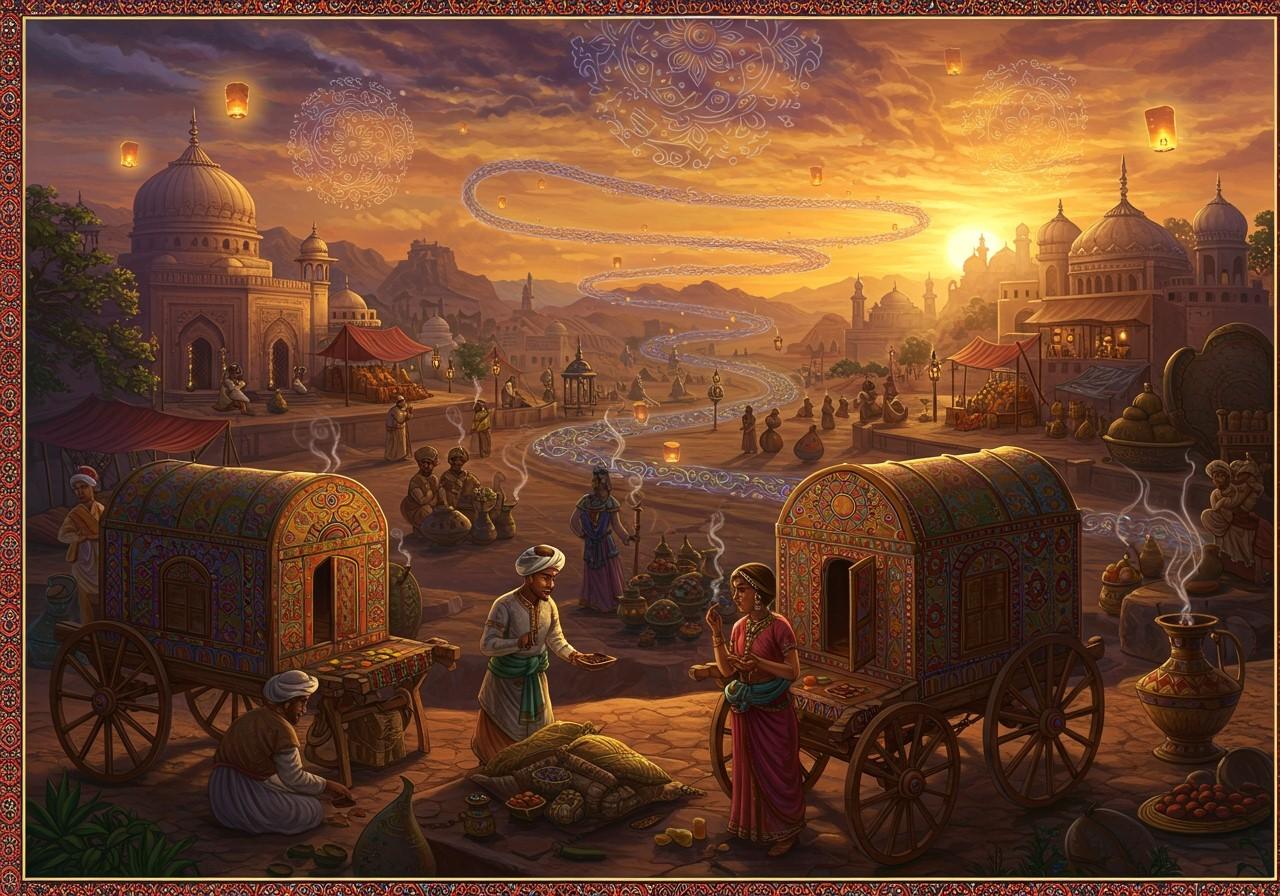
The Incense Route, a network of ancient trade paths connecting the Mediterranean with India and Arabia, played a pivotal role in the exchange of precious commodities like frankincense and myrrh. Delving into its history reveals fascinating insights into the economic, cultural, and social dynamics of ancient civilizations. This exploration unveils the historical significance of the Incense Route, the powers that controlled it, its timeline, and its lasting legacy.
Origin and Flourishing of the Incense Route
The Incense Route thrived from the 3rd century BC to the 2nd century AD, originating in the Arabian Peninsula and extending through southern Arabia to Egypt and the Mediterranean. Ancient inscriptions and archaeological discoveries confirm its existence and extensive use. This network facilitated the exchange of incense, spices, textiles, and precious metals. Various tribes and kingdoms, including the Nabataeans, played crucial roles in safeguarding and maintaining the route. The high demand for incense in religious and burial rituals throughout ancient Egypt, Greece, and Rome fueled its establishment.
Key Players and Regions
The Nabataeans, with their capital Petra, played a crucial role in controlling the Incense Route, transforming it into a major trading hub. The Himyarite Kingdom in southern Arabia also held significant influence over the incense trade. Control over the route shifted over time, with various empires and tribes vying for dominance. The Arabian Peninsula’s strategic location bridged East and West, with key ports like Aden facilitating incense distribution. The Roman Empire’s later involvement impacted the route’s expansion and security. Phoenician, Greek, and Roman merchants were key players in distributing incense throughout the Mediterranean.
Economic and Trade Impact
Incense, often valued as highly as gold, was a cornerstone of ancient economies. The trade route fueled the prosperity of cities along its path. The demand for incense in religious and cultural ceremonies drove trade, facilitating the exchange of diverse goods and fostering cultural and technological exchange. The wealth generated from the incense trade enabled the construction of monumental architecture, exemplified by Petra. Its economic influence extended far beyond the Arabian Peninsula, impacting trade networks in Africa, the Mediterranean, and Asia. The trade route facilitated the prosperity of cities and kingdoms along its path.
Cultural and Religious Significance
Incense possessed profound religious and cultural significance in ancient societies.
- In ancient Egypt, incense was integral to temple rituals and burial practices, honoring deities and the deceased. Priests used the fragrant smoke as a vehicle for prayers.
- Greeks and Romans employed incense in religious ceremonies, perfumery, and medicine, burning it in temples to appease gods and during festivals to create a sacred ambiance.
- In India, incense remains deeply embedded in spiritual and ritualistic practices, used in daily prayers, weddings, and other auspicious occasions. The soothing fragrance is believed to purify and bring positive energy.
The spread of incense via trade routes facilitated cultural exchange and the adoption of new religious practices. Its symbolic use in purification and communication with the divine underscores its cross-cultural importance.
Decline and Modern Relevance
The Incense Route’s decline began around the 3rd century AD with the rise of maritime trade, the spread of Christianity, and political instability. However, its legacy endures in the modern trade of incense and perfumes. Regions once part of this ancient network continue to produce high-quality incense. UNESCO recognizes the historical significance of sites like Petra, designated as World Heritage Sites, attracting tourists worldwide. Modern tourism in regions like Petra and southern Arabia thrives on the historical allure of the Incense Route.
Poojn.in: Connecting You to Ancient Traditions
Poojn.in brings the sacred tradition of incense to your doorstep, offering premium agarbatti that connects you with this ancient spiritual practice. We offer a diverse selection of authentic agarbatti in traditional fragrances essential for daily puja and meditation. Our collection includes pure sandalwood, rose, jasmine, and other traditional scents integral to Indian rituals for generations. Each agarbatti is carefully chosen for purity and fragrance, perfect for daily worship and special ceremonies.
At Poojn.in, you’ll find:
- Premium agarbatti from trusted brands like Moksh and Cycle, ensuring high quality and authentic fragrances.
- Traditional fragrances used in Vedic rituals, allowing you to experience the same scents used by our ancestors.
- Incense crafted from pure sandalwood and natural ingredients, offering a pure and natural aromatic experience. Red sandalwood malas are also available to enhance your spiritual practice.
Poojn.in’s agarbatti carries the same spiritual weight that made the ancient Incense Route so vital. Explore our complete range of authentic agarbatti and puja essentials, with pan-India delivery, at Poojn.in.
Conclusion: A Timeless Tradition
The Incense Route’s legacy underscores the interconnectedness of civilizations. The enduring use of incense in religious and cultural practices serves as a bridge between the material and spiritual realms, linking us to our ancestors. By embracing these traditions with the convenience of online platforms like Poojn.in, we keep the spirit of the Incense Route alive, cherishing rituals that connect us to our past and enrich our present. For further exploration, read more about incense, sacred sites in India, and Mahadev Temples.


